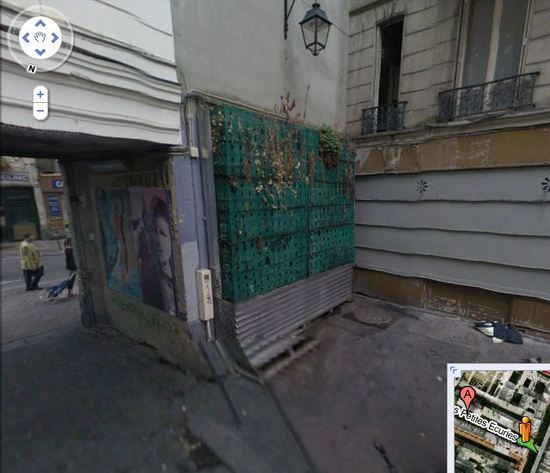
Maybe it’s a matter of missing the reportorial bowl, but Paris’s experiments with anti-public urination architectural technology are more interesting than the Wall Street Journal makes them out to be.
First off, the utter untimeliness of the story. Paris’s public toilets have been free since 2006. The single anti-urination wall, or mur antipipi, mentioned in the piece has been in place since 2005. The UK Telegraph and the Guardian re-covered the topic at length in 2007, basically by translating a Nouvel Observateur story featuring Etienne Vanderpooten, municipal architect for the City of Paris, and the inventor of the mur antipipi.
We’ll get to that in a minute. Among the other piss-thwarting streetscaping strategies: filling corners with “treacherous concrete cones”; and a steeply sloped “granite parapet” which is designed to be hard to stand on, especially after “la 3e cannette de bière.”
But here’s the wall from Google Streetview. About the zig-zag profile, Monsieur Vanderpooten explained it with a cinematic reference: “The jet of pee is rather oblique. If it meets a sloping surface it is sent back to the trousers…It is the case of the arroseur arrosé.”
Originally titled, le Jardinier, l’Arroseur Arrosé, or The Waterer Watered/ Sprinkler Sprinkled, was one of the Lumiere brothers’ first short films. It was shot in the Spring of 1895, first screened in June, and it was one of the ten shorts in the Lumieres’ first public cinema screening in December. Other shorts captured slices of life or street scenes; l’Arroseur Arrosé was the first one staged for the camera, the first comedy/gag, and some would argue, the first cinematic narrative.
You can imagine a remake set in the corner of the Cour des Petites Ecuries and starring a drunk football fan who step out of a nearby tabac would be pretty damn funny.
Skip to content
the making of, by greg allen
